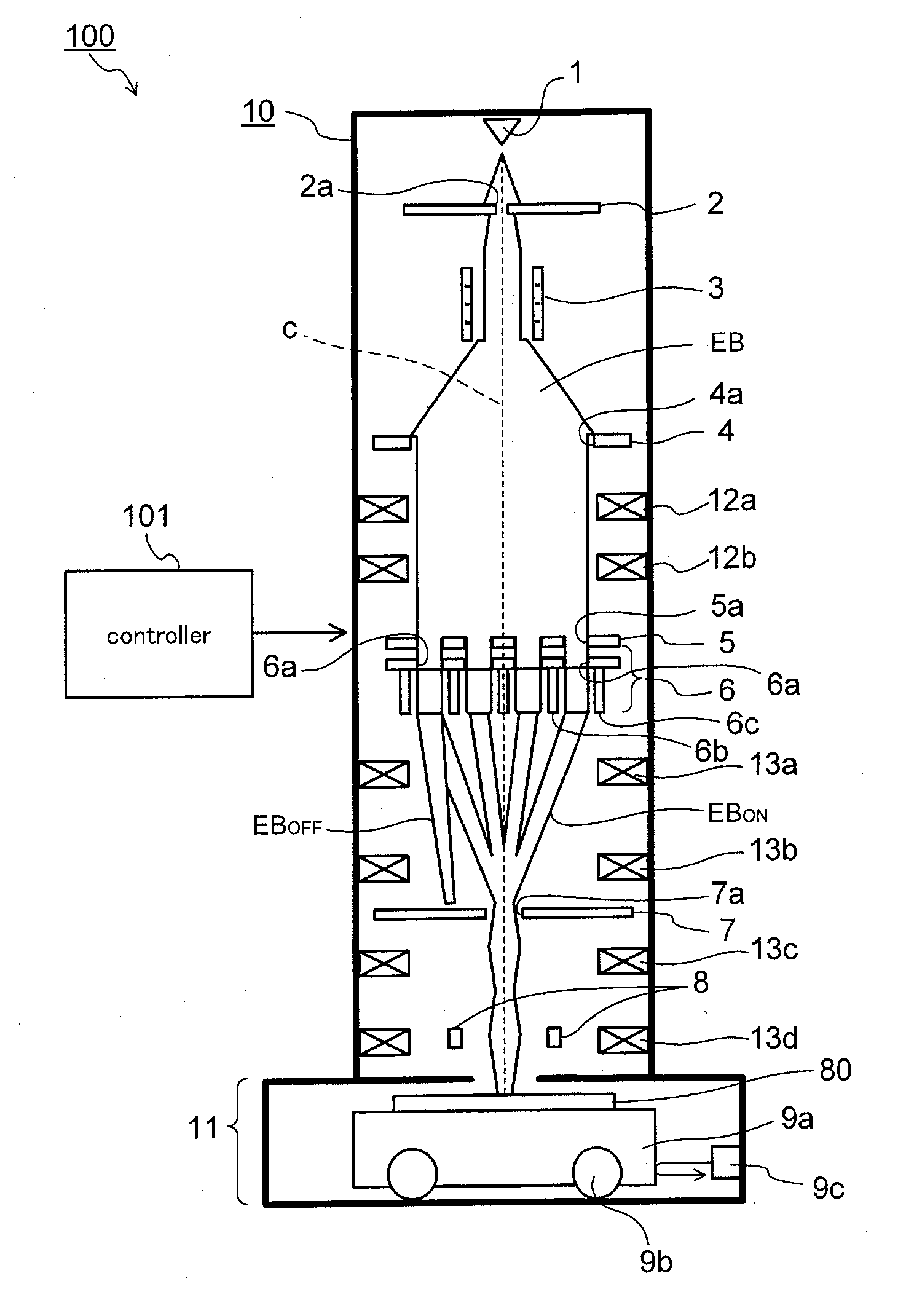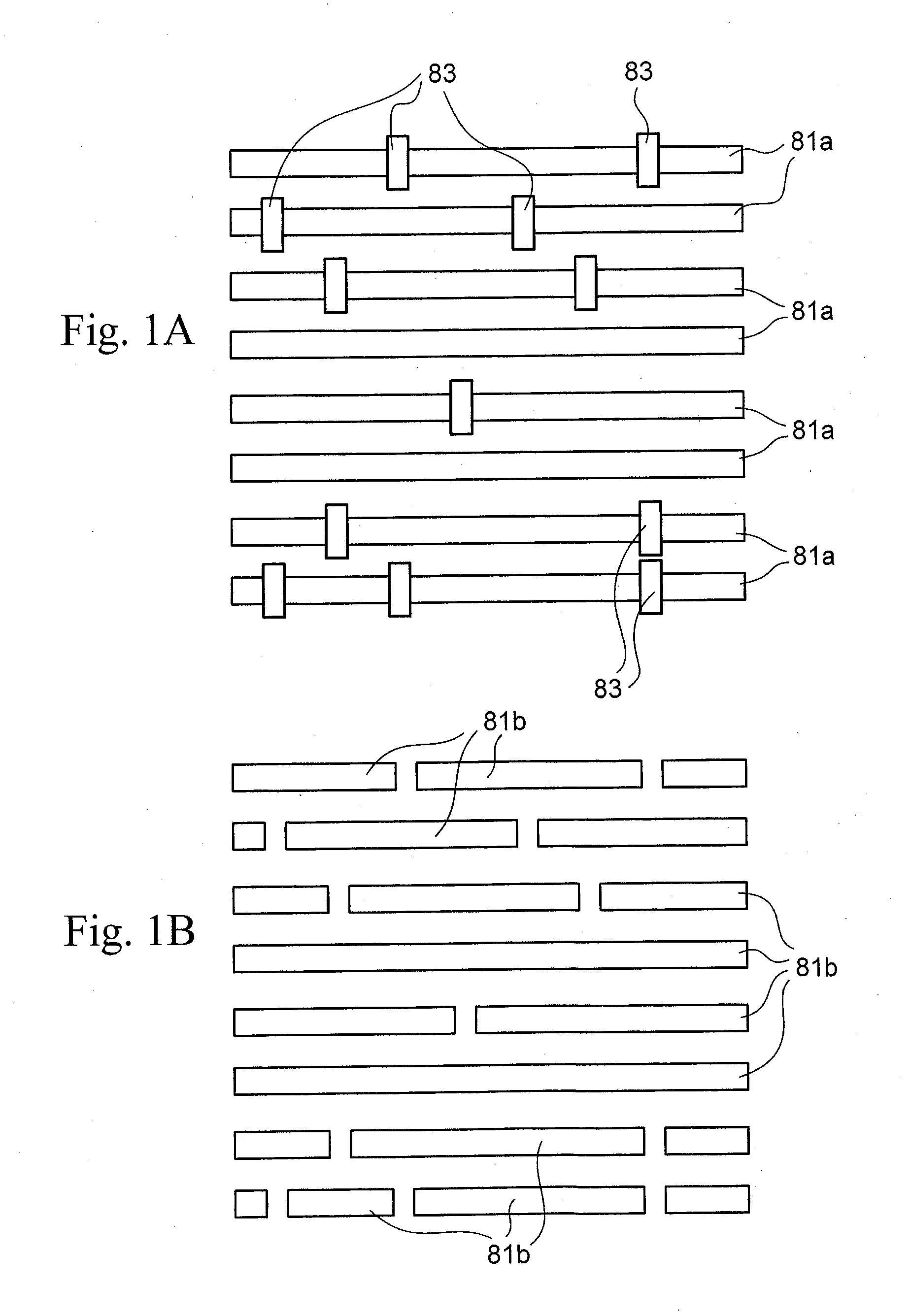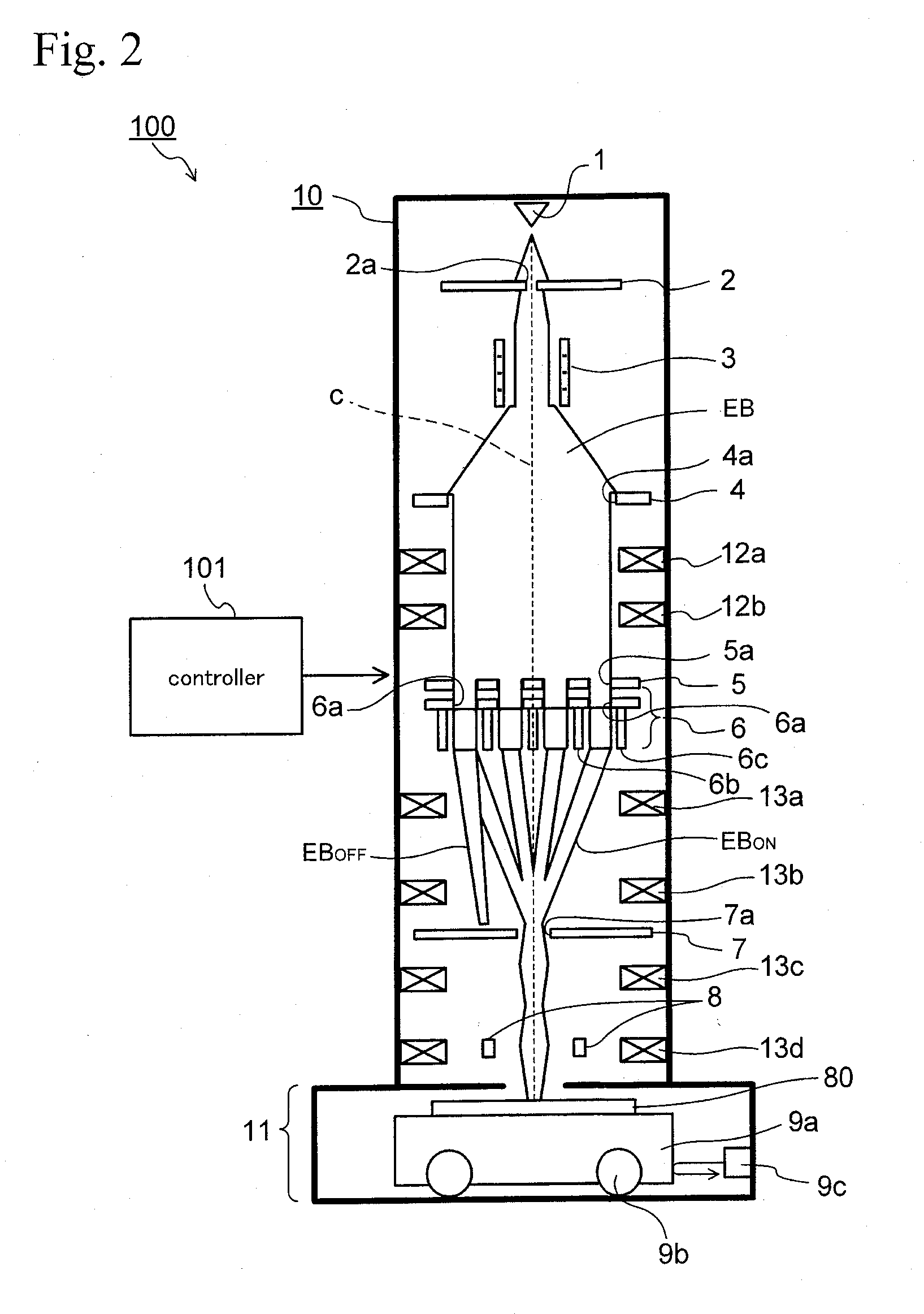Charged particle beam exposure apparatus and method of manufacturing semiconductor device
a technology of charged particle beam and exposure apparatus, which is applied in the direction of electrical apparatus, irradiation devices, electric discharge tubes, etc., can solve the problems of inability to achieve practical processing speed and difficulty in forming patterns having a line width of 20 nm or less, so as to reduce the time required for exposure, the effect of increasing the proportion of charged particle beams actually used for exposure to all of the charged particle beams and improving the usage efficiency of charged particle beams generated from th
- Summary
- Abstract
- Description
- Claims
- Application Information
AI Technical Summary
Benefits of technology
Problems solved by technology
Method used
Image
Examples
first embodiment
[0049](1) Configuration of Electron Beam Exposure Apparatus
[0050]FIG. 2 is a cross-sectional view of one column in an electron beam exposure apparatus of the embodiment.
[0051]The electron beam exposure apparatus 100 of the embodiment irradiates a surface of a semiconductor substrate 80 being an exposure target with electron beam EB (charged particle beam) by using the column 10 shown in FIG. 2. The column 10 includes a cylindrical case, and an electron gun 1 configured to generate the electron beam EB is provided inside the case near an upper end thereof.
[0052]The electron beam EB is emitted from the electron gun 1 at a predetermined accelerating voltage (for example, 50 keV), and is shaped to have a circular cross section about an optical axis c by passing through an opening 2a of a first aperture plate 2.
[0053]The electron beam EB having passed through the first aperture plate 2 passes through an asymmetric illumination optical system 3 provided below the first aperture plate 2. T...
second embodiment
[0163]The first embodiment shows an example in which the exposure amounts Dp and Dp+1 are linear functions of the internal ratio r. However, the present invention is not limited to this example.
[0164]In the embodiment, description is given of an example in which the exposure amounts Dp and Dp+1 are polynomials of the internal ratio r to further improve the accuracy.
[0165]As described with reference to FIG. 9, when the exposure amounts Dp and Dp+1 are linear functions of the internal ratio r, there is a variation of even function about the position of r=0.5 in the line width.
[0166]In view of this, in the embodiment, the variation of the line width of the cut pattern is further reduced as follows. For example, a fourth-order term and a sixth-order term are added as higher-order terms to cancel out an even function term appearing in the variation of the line width of FIG. 9 (curved line 99a).
[0167]Moreover, regarding the displacement of the cut pattern, for example, a third-order term ...
third embodiment
[0172]FIG. 14 is a perspective view showing a main portion of an electron beam exposure apparatus of a third embodiment.
[0173]As shown in FIG. 14, in the embodiment, a plurality of the columns 10 are arranged above the stage 9a. The structure of each of the columns 10 is the same as that of the column 10 shown in FIG. 3. Each column 10 can be formed to have a diameter of about 30 mm for example.
[0174]FIG. 15 is a plan view showing regions in which the respective columns 10 perform exposure when the columns each having a diameter of 30 mm are arranged on a semiconductor substrate having a diameter of 300 mm.
[0175]As shown in FIG. 15, 88 columns 10 can be arranged on the semiconductor substrate 80 having the diameter of 300 mm, and each of the columns 10 performs exposure on a region of 30 mm×30 mm. In the embodiment, since the plurality of columns 10 can perform exposure in parallel with each other, the exposure of cut patterns or via patterns can be more quickly performed.
[0176]A de...
PUM
 Login to View More
Login to View More Abstract
Description
Claims
Application Information
 Login to View More
Login to View More - R&D
- Intellectual Property
- Life Sciences
- Materials
- Tech Scout
- Unparalleled Data Quality
- Higher Quality Content
- 60% Fewer Hallucinations
Browse by: Latest US Patents, China's latest patents, Technical Efficacy Thesaurus, Application Domain, Technology Topic, Popular Technical Reports.
© 2025 PatSnap. All rights reserved.Legal|Privacy policy|Modern Slavery Act Transparency Statement|Sitemap|About US| Contact US: help@patsnap.com



